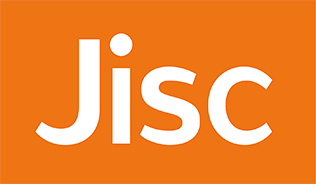Factors Associated with Employees’ Intention to Leave in ICT Sector in Iraq: A Factor Analysis
DOI:
https://doi.org/10.54536/ajebi.v3i2.3119Keywords:
Employees’ Intention to Leave, Employee Turnover, Employee Satisfaction, Work-Life BalanceAbstract
The current paper aims to identify potential factors associated with employees’ intentions to leave information and communication technology companies in Iraq. There is evident variability in the literature regarding these factors; hence, a factor analysis approach was employed to identify these factors within the surveyed environment. Due to the difficulty in precisely delineating the size of the research population, a purposive sampling method was employed to reach an appropriate number of respondents within the aforementioned companies. A total of 288 employees responded to the survey conducted via Google Forms. The test results revealed the presence of five primary factors associated with employees’ intentions to leave, namely: employee satisfaction, organizational commitment, work-life balance, employee compensation and benefits, and finally, professional development opportunities. These administrative aspects can contribute significantly to reducing employee turnover rates Iraq’s Information and Communication Technology (ICT) sector.
Downloads
References
Alam, A., & Asim, M. (2019). Relationship between job satisfaction and turnover intention. International Journal of Human Resource Studies, 9(2), 163.
Albrecht, S. L., Bakker, A. B., Gruman, J. A., Macey, W. H., & Saks, A. M. (2015). Employee engagement, human resource management practices and competitive advantage: An integrated approach. Journal of organizational effectiveness: People and performance, 2(1), 7-35.
Alsomaidaee, M. M. (2023). The effect of workplace stress on employee engagement, the mediation role of leadership style. American Journal of Economics and Business Innovation, 2(2), 74-85.
Alsomaidaee, M. M., Joumaa, B. A., & Khalid, K. W. (2023). Toxic Workplace, Mental Health and Employee Well-being, the Moderator Role of Paternalistic Leadership, an Empirical Study. Journal of Applied Business and Technology, 4(2), 114-129.
Al-Omari, G., Hanandeh, R., Al-Somaidaee, M., Jarrah, M., & Alnajdawi, S. (2020). Work-life balance and its impact on employee satisfaction on five star hotels. Management Science Letters, 10(4), 871-880.
Bayarçelik, E. B., & Findikli, M. A. (2016). The mediating effect of job satisfaction on the relation between organizational justice perception and intention to leave. Procedia-Social and Behavioral Sciences, 235, 403-411.
Belete, A. (2018). Turnover intention influencing factors of employees: An empirical work review. Journal of Entrepreneurship & Organization Management, 7(3), 1-7.
Bentley, T. A., Teo, S. T., McLeod, L., Tan, F., Bosua, R., & Gloet, M. (2016). The role of organisational support in teleworker wellbeing: A socio-technical systems approach. Applied ergonomics, 52, 207-215.
Biagi, F., & Falk, M. (2017). The impact of ICT and e-commerce on employment in Europe. Journal of Policy Modeling, 39(1), 1-18.
Bonekamp, L., & Sure, M. (2015). Consequences of Industry 4.0 on human labour and work organisation. Journal of business and media Psychology, 6(1), 33-40.
Brougham, D., & Haar, J. (2020). Technological disruption and employment: The influence on job insecurity and turnover intentions: A multi-country study. Technological Forecasting and Social Change, 161, 120276.
Buttner, E. H., & Lowe, K. B. (2017). Addressing internal stakeholders’ concerns: The interactive effect of perceived pay equity and diversity climate on turnover intentions. Journal of Business Ethics, 143, 621-633.
Calecas, K. J. (2019). Job satisfaction, employee engagement, and turnover intention in federal employment. Journal of Organizational Behavior Studies, 15(4), 123-145.
Cho, Y. J., & Song, H. J. (2017). Determinants of turnover intention of social workers: Effects of emotional labor and organizational trust. Public Personnel Management, 46(1), 41-65.
Choi, S. (2020). Flexible work arrangements and employee retention: A longitudinal analysis of the federal workforces. Public Personnel Management, 49(3), 470-495.
Cronley, C., & Kim, Y. K. (2017). Intentions to turnover: Testing the moderated effects of organizational culture, as mediated by job satisfaction, within the Salvation Army. Leadership & Organization Development Journal, 38(2), 194-209.
Dame, M. (2020). Health sciences faculty satisfaction in distance learning: A relationship to intent to leave (Doctoral dissertation).
Davidescu, A. A., Apostu, S.-A., Paul, A., & Casuneanu, I. (2020). Work flexibility, job satisfaction, and job performance among Romanian employees-Implications for sustainable human resource management. Sustainability, 12(15), 6086.
Dousin, O., Collins, N., Bartram, T., & Stanton, P. (2021). The relationship between work‐life balance, the need for achievement, and intention to leave: mixed‐method study. Journal of advanced nursing, 77(3), 1478-1489.
Gaber, S. (2020). Impact of Emergency Clinical Work Environment on Nurses’ Satisfaction and Intension to Leave. Egyptian Journal of Health Care, 11(2), 319-330.
Han, K., Trinkoff, A. M., & Gurses, A. P. (2015). Work‐related factors, job satisfaction and intent to leave the current job among United States nurses. Journal of clinical nursing, 24(21-22), 3224-3232.
Ibidunni, S., Osibanjo, O., Adeniji, A., Salau, O. P., & Falola, H. (2016). Talent retention and organizational performance: A competitive positioning in Nigerian banking sector. Periodica Polytechnica Social and Management Sciences, 24(1), 1-13.
Khalida, R. (2016). The effect of person-organization fit on turnover intention with job satisfaction as mediating variable. BISNIS & BIROKRASI: Jurnal Ilmu Administrasi dan Organisasi, 23(3), 2-14.
Kim, S., Tam, L., Kim, J.-N., & Rhee, Y. (2017). Determinants of employee turnover intention: Understanding the roles of organizational justice, supervisory justice, authoritarian organizational culture and organization-employee relationship quality. Corporate Communications: An International Journal, 22(3), 308-328.
Koc, M. (2018). Research on Correlations between Academicians’ Levels of Organisational Commitment and Their Intention to Quit Their Job: A Comparison of State and Foundation Universities. Journal of Education and Learning, 7(1), 163-173.
Kollmann, T., Stöckmann, C., Kensbock, J. M., & Peschl, A. (2020). What satisfies younger versus older employees, and why? An aging perspective on equity theory to explain interactive effects of employee age, monetary rewards, and task contributions on job satisfaction. Human Resource Management, 59(1), 101-115.
Lavoie‐Tremblay, M., Fernet, C., Lavigne, G. L., & Austin, S. (2016). Transformational and abusive leadership practices: impacts on novice nurses, quality of care and intention to leave. Journal of advanced nursing, 72(3), 582-592.
Levallet, N., & Chan, Y. E. (2019). Organizational knowledge retention and knowledge loss. Journal of Knowledge Management, 23(1), 176-199.
Li, J. J., Lee, T. W., Mitchell, T. R., Hom, P. W., & Griffeth, R. W. (2016). The effects of proximal withdrawal states on job attitudes, job searching, intent to leave, and employee turnover. Journal of Applied Psychology, 101(10), 1436.
Lloyd, K. J., Boer, D., Keller, J. W., & Voelpel, S. (2015). Is my boss really listening to me? The impact of perceived supervisor listening on emotional exhaustion, turnover intention, and organizational citizenship behavior. Journal of Business Ethics, 130, 509-524.
Lu, C.-q., Sun, J.-w., & Du, D.-y. (2016). The relationships between employability, emotional exhaustion, and turnover intention: The moderation of perceived career opportunity. Journal of Career Development, 43(1), 37-51.
Massingham, P. R. (2018). Measuring the impact of knowledge loss: a longitudinal study. Journal of Knowledge Management, 22(4), 721-758.
Masum, A. K. M., Azad, M. A. K., Hoque, K. E., Beh, L.-S., Wanke, P., & Arslan, Ö. (2016). Job satisfaction and intention to quit: an empirical analysis of nurses in Turkey. PeerJ, 4, e1896.
Modau, F. D., Dhanpat, N., Lugisani, P., Mabojane, R., & Phiri, M. (2018). Exploring employee retention and intention to leave within a call centre. SA Journal of Human Resource Management, 16(1), 1-13.
Moloney, W., Boxall, P., Parsons, M., & Cheung, G. (2018). Factors predicting Registered Nurses’ intentions to leave their organization and profession: A job demands‐resources framework. Journal of advanced nursing, 74(4), 864-875.
Nawaz, M., & Pangil, F. (2016). The relationship between human resource development factors, career growth and turnover intention: The mediating role of organizational commitment. Management Science Letters, 6(2), 157-176.
Ohunakin, F., Adeniji, A., & Oludayo, O. (2018). Perception of frontline employees towards career growth opportunities: Implications on turnover intention. Business: Theory and Practice, 19, 278-287.
Olawale, O., Ajayi, F. A., Udeh, C. A., & Odejide, O. A. (2024). Remote work policies for it professionals: Review of current practices and future trends. International Journal of Management & Entrepreneurship Research, 6(4), 1236-1258.
Olson, J. S., & Olson, G. (2022). Working together apart: Collaboration over the internet. Springer Nature.
Ospina, S. M. (2019). Illusions of opportunity: Employee expectations and workplace inequality. Cornell University Press.
Scholtz, B., Van Belle, J.-P., Njenga, K., Serenko, A., & Palvia, P. (2019). The role of job satisfaction in turnover and turn-away intention of IT staff in South Africa.
Schulze, J., & Krumm, S. (2017). The “virtual team player” A review and initial model of knowledge, skills, abilities, and other characteristics for virtual collaboration. Organizational Psychology Review, 7(1), 66-95.
Sorensen, L. C., & Ladd, H. F. (2020). The hidden costs of teacher turnover. Aera Open, 6(1), 2332858420905812.
Sostero, M., Milasi, S., Hurley, J., Fernandez-Macías, E., & Bisello, M. (2020). Teleworkability and the COVID-19 crisis: a new digital divide?
Spreitzer, G. M., Cameron, L., & Garrett, L. (2017). Alternative work arrangements: Two images of the new world of work. Annual Review of Organizational Psychology and Organizational Behavior, 4, 473-499.
Supangco, V. T. (2015). Explaining employee intentions to stay in organizations: The case of MBA students. Journal of International Business Research, 14(3), 83.
Swe, K. T. H. (2019). The enhancement of employee engagement to reduce employee turnover intention and improve employee job satisfaction: an action research on Mirac Company in Yangon, Myanmar.
Timms, C., Brough, P., O’Driscoll, M., Kalliath, T., Siu, O. L., Sit, C., & Lo, D. (2015). Flexible work arrangements, work engagement, turnover intentions and psychological health. Asia Pacific Journal of Human Resources, 53(1), 83-103.
Urrutia Pereira, G., de Lara Machado, W., & Ziebell de Oliveira, M. (2022). Organizational learning culture in industry 4.0: relationships with work engagement and turnover intention. Human Resource Development International, 25(5), 557-577.
Warrick, D. D. (2017). What leaders need to know about organizational culture. Business Horizons, 60(3), 395-404.
Witham, G. W. (2018). The effect of perceived support on an employee’s intent to quit in the clinical laboratory (Doctoral dissertation). Capella University.
Yarbrough, S., Martin, P., Alfred, D., & McNeill, C. (2017). Professional values, job satisfaction, career development, and intent to stay. Nursing Ethics, 24(6), 675-685.
Downloads
Published
How to Cite
Issue
Section
License
Copyright (c) 2024 Dheyaa Talib Mohammed, Mustafa Mahmoud Alsomaidaee, Ahmed A. Mahmood

This work is licensed under a Creative Commons Attribution 4.0 International License.














